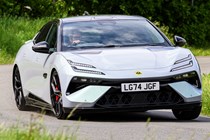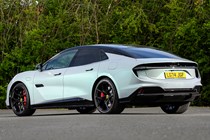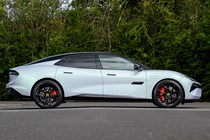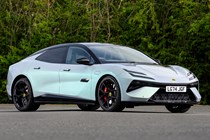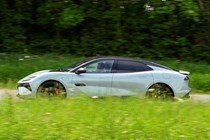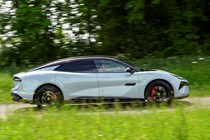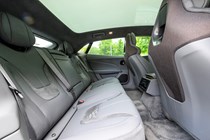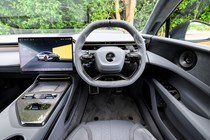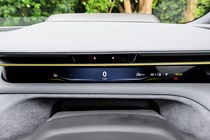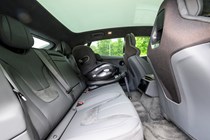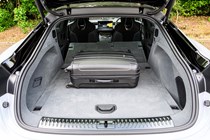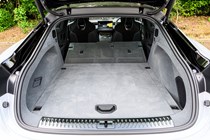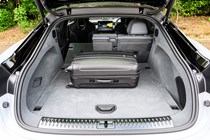
Lotus Emeya engines, drive and performance
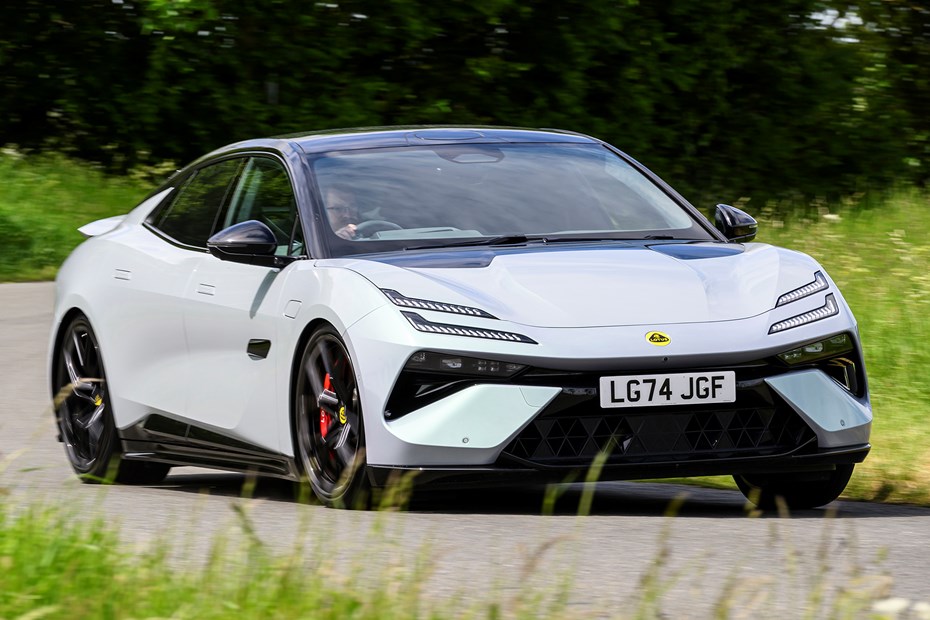
- 603hp and 905hp versions available
- The latter is immensely fast
- Not especially engaging to drive
What power options are there?
We should note at this point that we’ve driven the Lotus Emeya S and Emeya R that were available initially. Those models have now been replaced by 600 and 900 versions that correspond to the S and R respectively, the numbers indicating how much horsepower (HP) they have. So, the Emeya 600 has 603hp and the Emeya 900 has 905hp. Both have dual electric motors which gives all-wheel drive.
The 600 is certainly fast, though its acceleration isn’t quite as strong as you might expect for a car with this much power – that’d be the 2.5-ton kerbweight. Still, 0-62mph in 4.2 seconds is nothing to be sniffed at. The 900 is significantly more forceful, catapulting to 62mph in just 2.8 seconds – proper supercar stuff.
That’s achieved with the launch control active which requires you to put the car in Track mode and turn off the stability control. You need your wits about you, though. The front motor is powerful enough to turn the steering (torque steer, as it’s called), sending the car towards the white lines if you don’t correct it, and there’s the odd shimmy from the rear, too.
The route we drove on the international launch event included some stretches of derestricted German Autobahn, where both versions of the Emeya whistled into three-digit speeds with ease. Only relevant in the UK if you do track days, but nice to know all the same. Top-of-the-range versions of the Porsche Taycan and Audi e-tron GT are even faster and don’t feel quite so squirrely, either.
You can find all the facts and figures for every model on our Lotus Emeya specs pages.
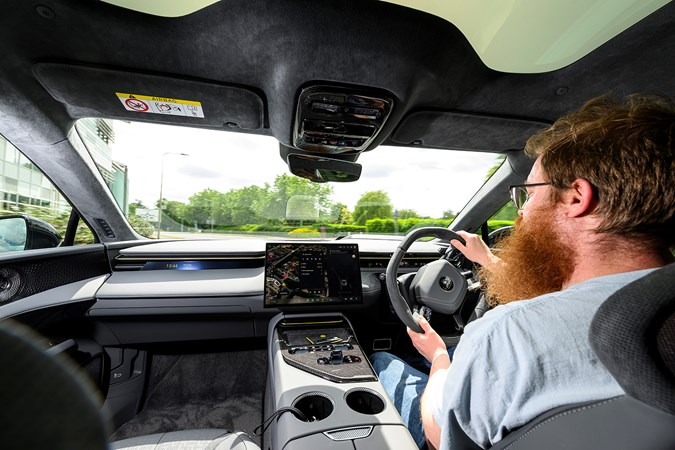
What’s is like to drive?
- Advanced chassis tech
- Agile but heavy
- Firm yet refined
There’s a lot of technology in the Emeya’s chassis that’s intended to make the car feel agile and controlled on the road – and cope with the thing’s 2.5-ton heft. That tech includes all-wheel drive, adaptive air suspension, torque vectoring (which portions power to the wheel best able to cope with it) and four driving modes – Range, Tour, Sport and Individual. Emeya 900 models also have active anti-roll control, rear-wheel steering, Standard and Sport settings for the steering and a track mode. That lot’s also fitted to the 600 Sport SE.
It all proves highly effective. The R we drove is undoubtedly more capable and agile, turning in sharper, gripping harder and controlling its mass better. It feels nicely balanced when pushed through corners as well, but it’s not as involving or playful as the Porsche Taycan and BMW i5 M60.
Nor is the active ride control as clever as Porsche’s astonishing system that’s optional on the Taycan. While the Lotus system limits roll well and certainly amps up agility, the Porsche system seems to shed weight from the car, making it feel far keener to corner, virtually roll-free and also delivers incredible ride quality. The Emeya feels a bit stiff and clumsy in comparison, although it is several hundred kilos heavier than even the chunky Taycan.
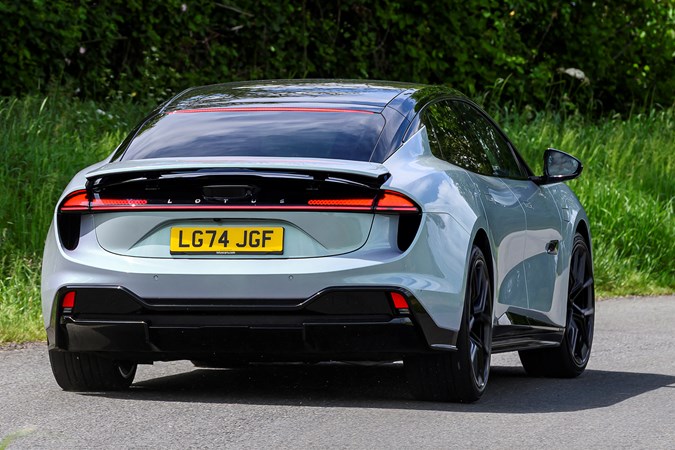
Which leads us to conclude the Emeya 600 is the sweeter car to drive. Even without active anti-roll, it corners with little lean and feels lighter on its feet. It’s more natural and still plenty fast enough cross-country – one of our testers likened its effortless pace to the Audi S8. The steel brakes on the S are easy to modulate, as well – the optional carbon ceramic discs on our Emeya R test car were grabby at low speeds.
The Emeya’s a big thing to thread through town, but its agility means it doesn’t induce anxiety. It’s not as softly sprung as the Mercedes-Benz EQS or BMW i7, prioritising body control at the expense of limo-like waft. But, slightly firm ride aside, there’s still a serenity to the way it cruises along a motorway, the peace only disturbed by louder-than-ideal wind noise. The R has tighter body control in all drive modes, all but eliminating waft without making things too firm.


